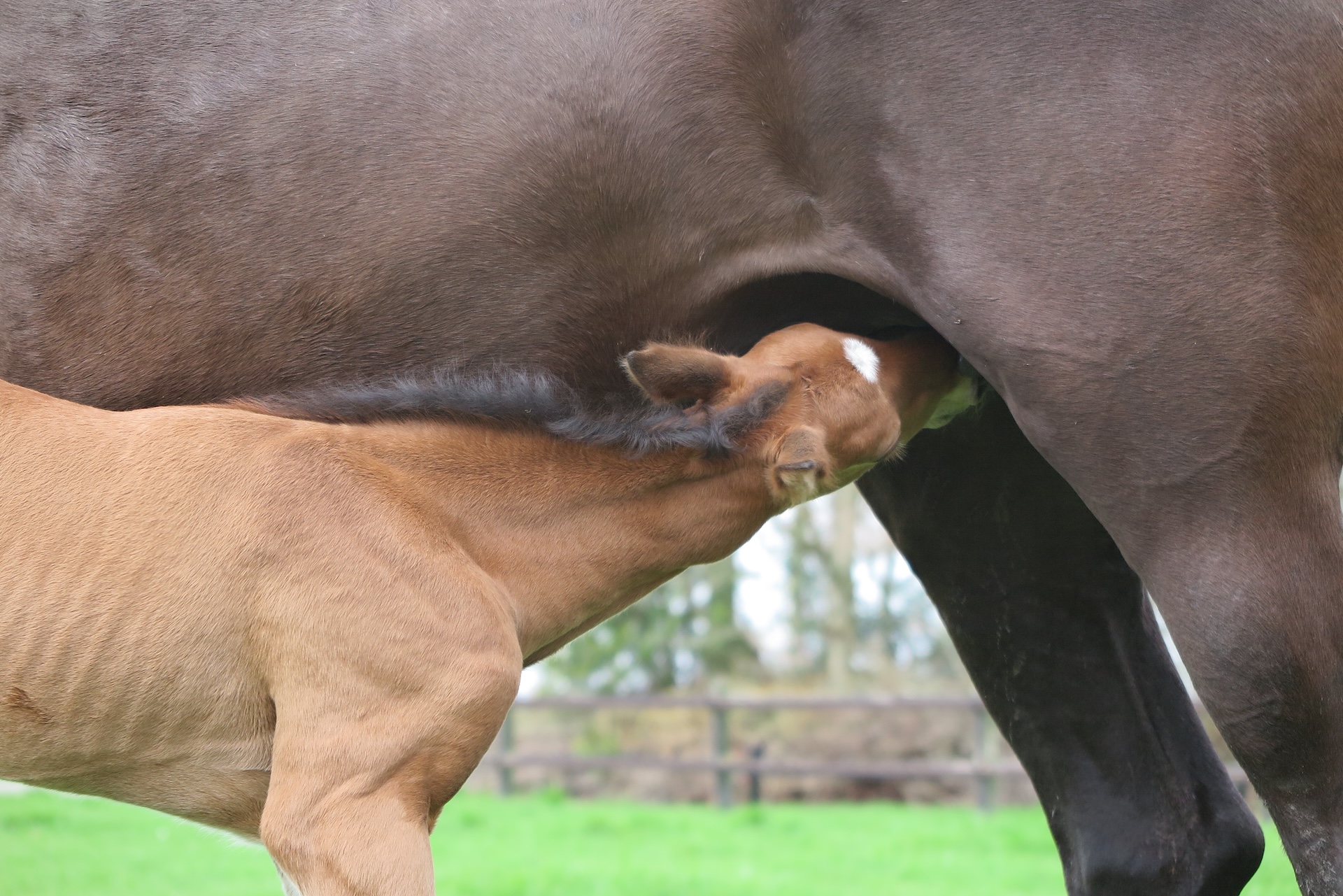In-foal and birth
De Lindehoeve
At De Lindehoeve you have the possibility to inseminate your mare with the sperm of your choice. The entire mare support can also be done with us. This is of course done by a veterinarian, who scans the mare as often as necessary. For pregnant mares we have extra water and feed troughs.
Maternity Stables
The In-foal mare is placed in one of our maternity stables 2 weeks before the due date. We only work with spacious delivery boxes. The pregnant mare is subject to extra supervision and we use a birth alarm. Furthermore, the mare gets extra lump.
As the owner you can watch how the foal is born via the controllable webcams. Of course you as an owner are also welcome to be present at the delivery. The first ten days we walk with the foal daily.
Embryo transfer
It is also possible at De Lindehoeve to have an embryo transfer. With an embryo transfer the embryo is transferred from one mare to another, the surrogate mare. This is mainly applied in equestrian sports, for example when the mare runs competitions.
With embryo transplantation the mare needs to be supervised more intensively and more actions are needed to make a mare pregnant. Flushing the mare and transplanting the embryo is a specialist treatment and therefore more expensive.

Birth alarm
We work with birth alarm Sigloo.
Sigloo-alarm
With the Sigloo alarm, a transmitter with a magnet is sewn onto the vulvalip. During the delivery, this magnet will be pulled out of the transmitter, causing the alarm to go off. This alarm also has various advantages and disadvantages. One of the advantages is that the alarm is fairly easy to install. Also, nothing is applied to the cervix, which reduces the chance of infections. The alarm will also go off in the event of a standing birth and the mare can continue to walk in the meadow or paddock. There are also no strings that can irritate. The alarm has almost no false alarms, but if no paws enter the birth canal, the alarm will not go off. There is also little time from the moment the alarm goes off, the foal is then born quickly. This ensures that there is little time to properly lay the foal and have a vet and the owner come. If the suture is in the same place for a long time, the vulval lip can tear. The magnet will then remain on the transmitter, so the alarm will not go off.
Care for mare with foal
At De Lindehoeve, your mare with foal, along with other mares, has wonderful free entry and exit from the stable to the paddock and meadows or they are 24/7 outside in the meadow. Mares can come to us before or after the birth of the foal. You have the choice to let the mare give birth to us.
Did your mare get a foal at home? As soon as the foal is ten days, the foal can be brought with the mare. We have several mares with foals that forms a group. The foals are weaned after about six months. By weaning foals together, the foal is not so alone. This ensures that weaning is better.
